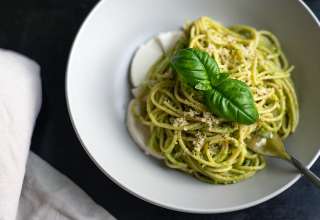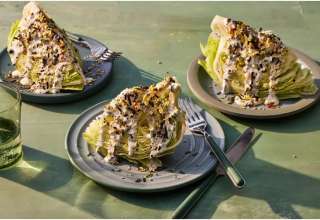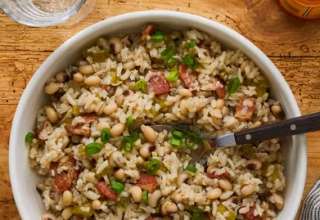
A crostata is an Italian baked tart or pie, also known as sfogliate in Lombardy and coppi in Naples. The earliest known use of crostata in its modern sense can be traced to the cookbooks Libro de Arte Coquinaria (Book of the Art of Cooking) by Martino da Como, (circa 1465). Como was an Italian 15th-century culinary expert who was unequalled in his field at the time and could be considered the Western world’s first celebrity chef. Applauded by his peers, he was known as the prince of cooks.
Arte Coquinaria (The Art of Cooking) is considered a landmark in Italian gastronomic literature and a historical record of the transition from medieval to renaissance cuisine.
Here’s a modern-day Easter delight, courtesy of Francesca Montillo, ISDA Food + Travel Writer.
Buona Pasqua! — Audrey
Lemon Cream and Ricotta Crostata
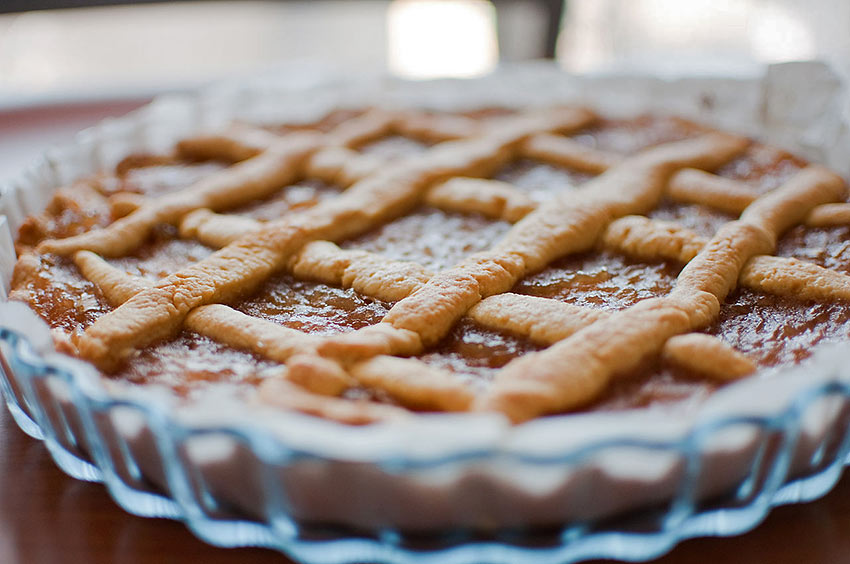
Courtesy of Francesca Montillo, ISDA Food + Travel Writer
What is it about the Easter holiday and ricotta? It seems that ricotta cookies, ricotta tarts and ricotta pies are the thing to prepare during this week.
I for sure will be making my family’s favorite: Lemon Cream and Ricotta Crostata. It’s a favorite in my household and it wouldn’t be Easter without it.
I mean, it would be, but it’s so much better with it! I must admit, it’s a bit of work. Unlike some of my other recipes, this one is a labor of love as it requires a few steps. All that aside, it’s so worth the effort.
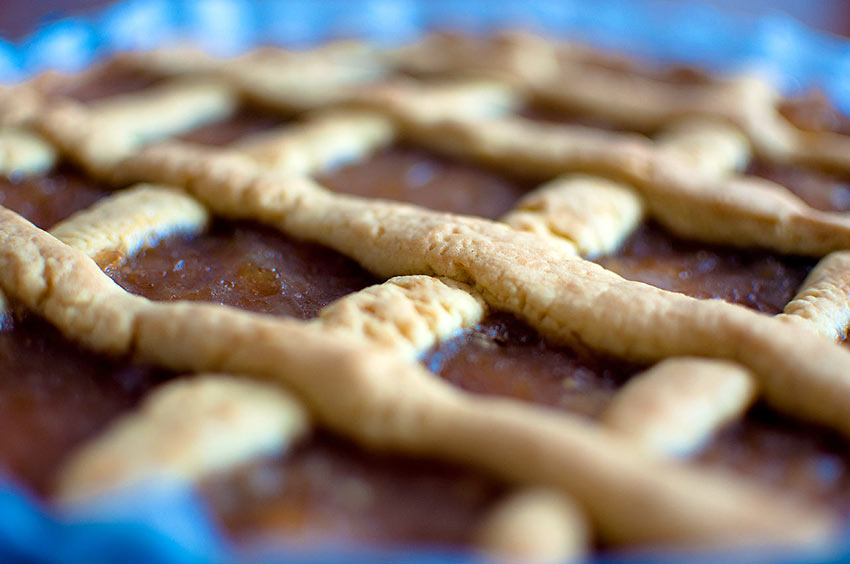
While you can top the crust with all sorts of jams and even Nutella, the most decadent of them all is definitely with ricotta and cream.
You can make it with just the cream, bake the crust and top it with fruit. Or you can make it with just ricotta.
By combing the cream with the ricotta, and you’ve got a dessert worthy of being served for parties, holidays and even as a birthday cake!
I always make the cream first and allow that to cool in the fridge while I make the crust. It doesn’t have to be completely cooled, but by the time you make the crust, you’re ready to mix the cream with the ricotta.
Ingredients for the Pastry Cream:
- 1 lemon peel
- 2 1/4 cups whole milk
- 1/2 cup + 2 tablespoons sugar
- 5 large egg yolks
- 1 teaspoon vanilla
- 4 tablespoons flour, sifted
- 1 cup whole milk ricotta cheese
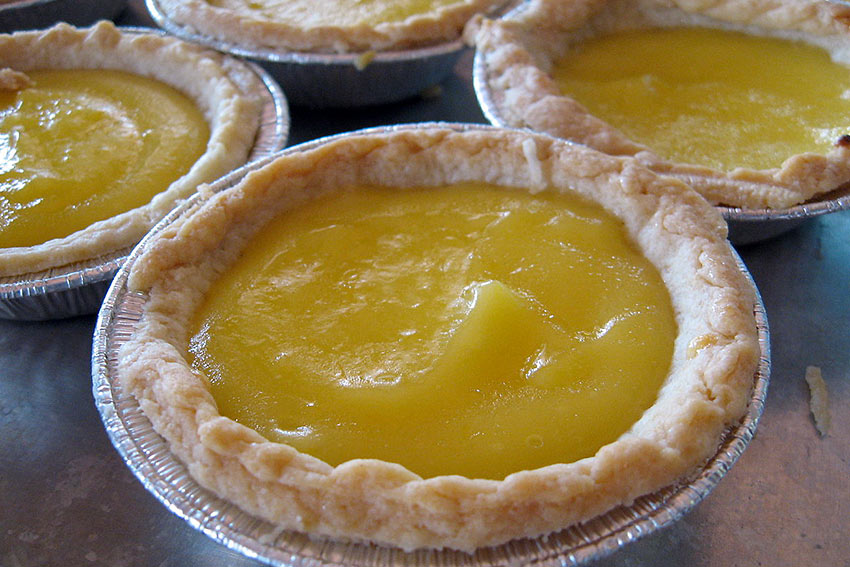
Directions for Pastry Cream:
Wash the lemon and with a paring knife gently remove the peel (as if peeling an apple), making sure you don’t remove the pith of the lemon (the white part under the peel) as that is bitter.
In a medium saucepan, bring the milk with the lemon peel to a light boil.
In the stand mixer, or using the handheld mixer, mix the egg yolks and sugar until well combined, add vanilla. Sift the flour over egg mixture and blend.
Remove the milk from the heat. With the mixer on low, slowly add about one cup of the hot milk to the egg mixture. Slowly continue adding all the milk.
Transfer the mixture back to the saucepan. With the heat on low, gently cook the cream for several minutes until it thickens up to pudding consistency.
Transfer cream to a bowl, place plastic wrap directly above it to prevent a skin from forming. Refrigerate while you prepare the crust.
Ingredients for the Crust:
- 11 tablespoons unsalted butter, at room temperature for several hours
- 2/3 cups sugar
- 1 large egg
- 1 large egg yolk
- 2½ cups flour
- Zest of 1 orange or 1 lemon
- 2 teaspoons baking powder
- ¼ teaspoon salt
- 1 to 2 tablespoons milk (only if needed, see step 3 below)
Directions for Crust:
Preheat the oven to 350F.
With a stand mixer or hand-held mixer, mix the soft butter with sugar for 2 or so minutes. Add egg and egg yolk and mix well.
Slowly add flour, it will look dry and crumbly but it will come together nicely. Add the zest and baking powder and the (If dough appears very dry, you can add 1-2 tablespoons of milk. You should only need to do this is your butter is not soft enough, or you are using smaller eggs.)
Invert crust on a slightly floured surface and work the dough until it comes together in a nice round ball. Cut about 1/3 of the dough and set aside for lattice topping. Press the remaining 2/3 of dough into a 12-inch pan that has been sprayed with cooking spray for baking, or greased with butter and floured.
Dock the crust with a fork at least 12-15 times, this will prevent any air bubbles from forming while baking.
When the pastry cream is cooled, remove the lemon peel and discard. Add the ricotta to the cream and gently fold together. Evenly spread cream and ricotta mixture over crust.
With a rolling pin, roll out remaining dough and cut 8-10 equal strips of dough about ½ inch wide. Top the crostata with strips.
Bake crostata for 45-50 minutes, until firm and the lattice topping is golden. Cool completely before inverting crostata in a serving dish, dust with powdered sugar.
In English, we greet each other at Easter time by saying Happy Easter, but what about Italians?
The Italian Easter greeting you will hear most often is Buona Pasqua, which literally translates as Good Easter!
Buona Pasqua a tutti!


